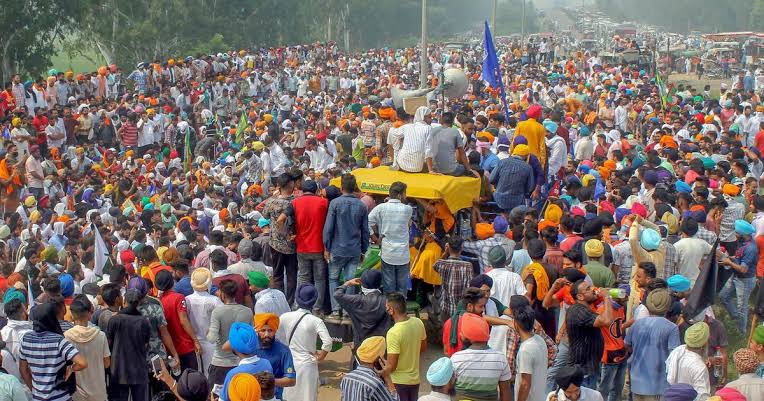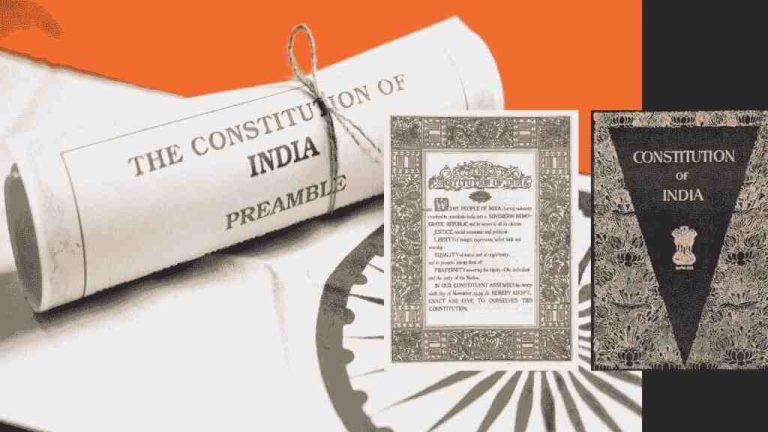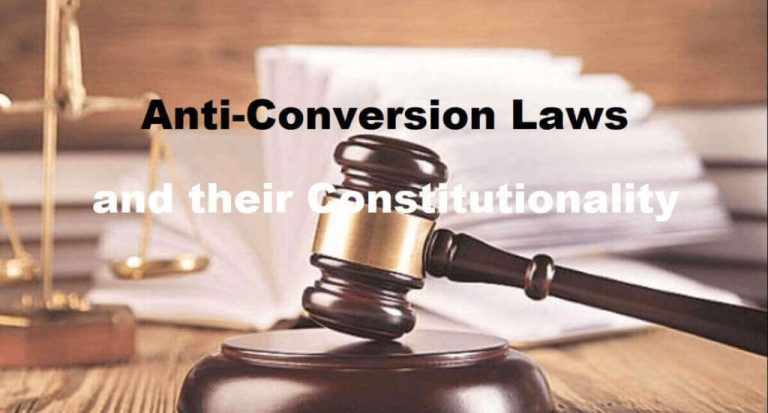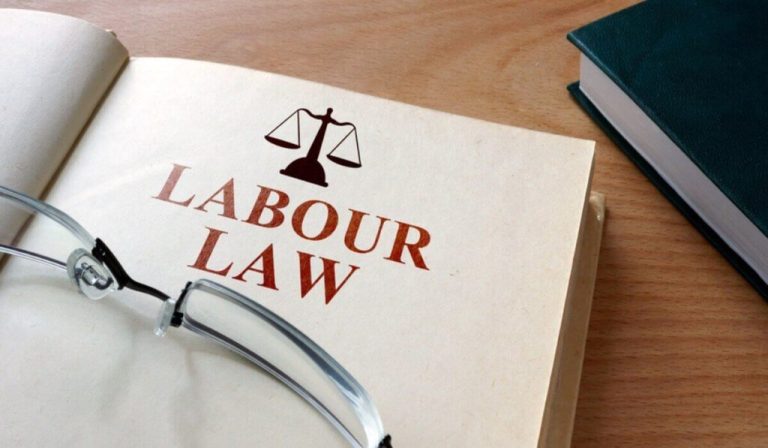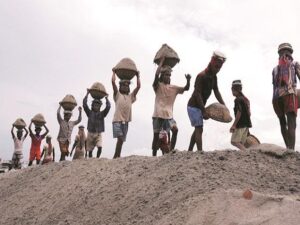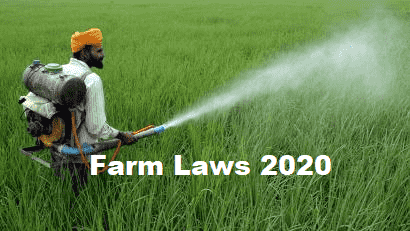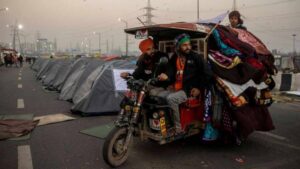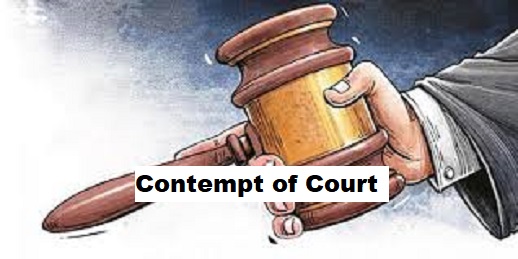The incidents of sexual violence are not a novel concept rather it has prevailed in the society forever. If we study the history we find that the issues of sexual assaults have been recorded and documented for long. From the writings of ancient Greece to the Bible to the letters of early explorers sexual violence has long been a brutal part of the human story. Some assaults have even changed the course of history. ‘Women are erased,’ says Sharon Block, professor of history at University of California, Irvine and the author of Colonial Complexions: Race and Bodies in Eighteenth-Century America.
The historic rapes that ‘mattered’ are the only ones where men saw themselves damaged. Wars, especially, have been linked to conspicuous sexual assaults from mass rape committed by Soviet soldiers as they advanced into Germany during World War II to sexual violence amid the genocides in Rwanda in 1995. In fact, the ubiquity of sexual assault in wars makes those crimes a category unto themselves.
WHAT IS RAPE?
Rape is a stigma upon the woman or the victim that exists with her in the society for a long time. The dictionary meaning of the word rape is ‘the ravishing or violation of a woman’. Rape is one of the most heinous forms of sexual harassment against women which not only damages the woman physically but also drains her mentally. She is treated as an accomplice in the society which values chastity as the most important attributes of womanhood and does not hesitate to test it by subjecting the woman to the ordeal of fire without causing a ripple amongst the onlookers.
It’s a sad reality of our society which is patriarchal in nature where the victim is forced to suffer. She is crippled for life and has no privacy. She is held responsible for her fate in one way or the other. She has to relive the tragedy that she went through in the court rooms if she gathers enough courage to prove her innocence. Thus it is very unfortunate that it is the victim and not the accused of rape that carries the social stigma of life.
THE PSYCHOLOGY BEHIND RAPE
Being raped is one of the most distressing, horrendous and demeaning experiences anyone could have. It almost always leaves the victim with feelings of self-loathing, self-blame and rage, and can also cause post-traumatic syndrome disorder (PTSD).
The motives behind rape vary and are difficult to quantify.
However, studies show that rapists have some common characteristics:
- a lack of empathy
- narcissism
- feelings of hostility towards women
Toxic masculinity
Sherry Hamby a research professor of psychology at the University of the South in the US State of Tennessee, said ‘sexual assault is not about sexual gratification or sexual interest, but more about dominating people.’
It is necessary to first establish that rape is not a behavioral or mental disorder, but a criminal offence. Although some rapists may have a psychological disorder, there is no such disorder that compels people to rape.
Hostility Towards Women
Rapists often see women as sex objects who are there to fulfill men’s sexual needs. They tend to hold false beliefs, often described as rape myths. For instance, a rapist can believe that if a woman says no, she really means yes, and that she is just playing around or challenging him.
Sherry Hamby further added that in some cultures, patriarchy and dominance are expressed through a kind of “dehumanization” in which women are seen as inferior beings to men. This makes it much easier for women to become the targets of aggression.
THE DISTURBING STATISTICS
On an average, 88 rapes take place every day in India, according to the National Crime Records Bureau (NCRB) data for 2019. However, the conviction rate is as low as 27.8%. This means, out of 100 accused, only 28 gets convicted. The NCRB data reveals that the rate of crimes against women increased from 58.8 in 2018 to 62.4 in 2019. There were 32,033 incidents of rape and the crime rate for rape was the highest in Rajasthan, where 5,997 rapes were reported in 2019.
According to the NCRB report, maximum rape cases are reported from Rajasthan and Uttar Pradesh. Nearly 6,000 rape cases were reported in Rajasthan, followed by 3,065 cases in Uttar Pradesh in 2019 followed by Madhya Pradesh at 2,485, Maharashtra 2,299 and Kerala 2,023. Delhi reported 1,253 rape cases in 2019. Uttar Pradesh and Rajasthan have seen a rise in sexual violence as a tool of oppression against Dalit communities. Of all the reported rape cases in Uttar Pradesh, 18 per cent victims are Dalit women, almost double of that in Rajasthan (9 per cent).
One of the common reasons why criminals don’t get punished is the poor police investigation. Reasons such as hostility of witnesses and complainants and the familial pressure on the victim also play a big role. The NCRB figures assume significance as it also shows that in many cases, victims don’t approach the police complaining about the rape or sexual assault. Expressing concern over the low conviction rate, even the Supreme Court had observed that 90% of rape cases end in acquittal.
The rape vulnerability of a girl or woman has increased up to 44 per cent in the last 10 years, the National Crime Records Bureau (NCRB) data shows. According to the NCRB data, during the period 2010-2019, a total of 3,13,289 cases were reported across India.
CASTE DYNAMICS AND SEXUAL VIOLENCE IN INDIA
Caste dynamics permeate every aspect of life across vast swathes of India, particularly in the South Asian nation’s rural areas. When it comes to sexual violence, a potent mix of caste-driven rivalries, and sometimes religion-based as well, have been the prime motivational reasons. The Bhanwari Devi case in the State of Rajasthan, Khairlanji Lalasa Devi and Delta Meghawal cases are all examples of atrocities on women who belonged to Dalit community and lower castes.
According to Kroeber (1930), castes are a special form of social classes, their customs and laws are rigid and separated from one another. However, social movements against caste hegemony in the colonial and post-colonial periods have immensely contributed to the restructuring of caste equations. In addition, constitutional safeguards stand in contradiction to the conventional norms and rules of the caste system.
With the introduction of constitutional modernity and democratic spaces, the struggle against caste inequality changed in many ways as marginalised communities like the Dalits and the lower castes were given equal citizenship rights. However, the assertion of rights from Dalit and lower caste communities often leads to a backlash from the dominant castes and upper castes in the form of violence and atrocities.
The Indian constitution challenges this caste impunity through certain laws and acts which protect the marginalised and vulnerable from the atrocities committed against them, for instance, the Scheduled Caste and Scheduled Tribe Protection against Atrocity Act to safeguard the scheduled castes, previously untouchables, and the scheduled tribes against atrocities by any individuals belonging to non-scheduled castes and nonscheduled tribes. Although, the POA Act enlists sexual violence against Dalit women by uppercaste/dominant caste men as an atrocity, the discourse on the role of caste in sexual violence has been largely missing from the upper-caste women’s movement, academia, and civil society.
Before the coming into existence of the Vishakha guidelines, there were absolutely no laws dealing specifically with sexual harassment. It was either incorporated under Section 354 or Section 509 of the Indian Penal Code. Sexual harassment of a woman by words, gestures or stalking finds recognition in Section 509 which prescribes punishment for one year and is a cognizable and bailable offence. It thus hardly had any impact. However in the case of Vishakha and Others v. State of Rajasthan the court for the first time defined sexual harassment as any unwelcome sexually determined behavior which could result in humiliation to the victim or adversely affect her health and safety.
This concept had been borrowed from the United Nations Convention on the Elimination of All Forms of Discrimination Against Women (CEDAW),1979 which India has both signed and ratified. The Supreme Court laid down certain guidelines for the prevention and punishment of sexual harassment at the workplace to ensure gender equality of working women. Nearly 16 years after the court came up with these guidelines the Sexual Harassment of Women at Workplace (Prevention, Prohibition and Redressal) Bill, 2012 was passed by both the houses of the Parliament and received Presidential assent on 22nd April, 2013.
THE LAWS ON RAPE
In India rape is a criminal offence. Section 375 and Section 376 of the Indian Penal Code, 1860 define the offence of rape and also prescribe punishment for the offenders. There were no changes made in the law since their inception in 1860 until 1983 amendments following huge protests in the wake of the controversial Supreme Court judgement in the Mathura rape case.
Section 375 of the Indian Penal Code, 1860 gives the legal definition of the term rape. A man is said to commit ‘rape’ if he—
- First- Against her will.
- Secondly- Without her consent.
- Thirdly- With her consent, when her consent has been obtained by putting her or any person in whom she is interested in fear of death or of hurt.
- Fourthly- With her consent, when the man knows that he is not her husband, and that her consent is given because she believes that he is another man to whom she is or believes herself to be lawfully married.
- Fifthly – With her consent, when, at the time of giving such consent, by reason of unsoundness of mind or intoxication or the administration by him personally or through another of any stupefying or unwholesome substance, she is unable to understand the nature and consequences of that to which she gives consent.
- Sixthly – With or without her consent, when she is under eighteen years of age.
- Seventhly- When she is unable to communicate consent.
There are two exceptions to the definition of rape. First, it does not include any medical procedure or intervention. Secondly, it does not constitute rape even if it is a forced sexual intercourse by a husband with his wife; the wife being not less than 15 years of age does not amount to rape.
Section 376 provides for the punishment of rape wherein who ever commits the offence of rape shall be punished either with imprisonment for a period of seven years which may be for life or for a term which may extend to ten years and shall also be liable to a fine.
Consent is the determining factor for rape. The absence of consent distinguishes rape from ordinary consensual sexual intercourse. Initially the judiciary laid emphasis on the use of force and physical injuries on the body of the victim to prove that there had been rape. Also the passive submission would not constitute absence of consent.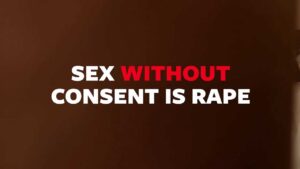
Under these circumstances it became extremely difficult for a woman to prove that she did not consent. Even the forensic evidence couln’t be produced in all cases unless the woman is medically examined within 24 hours of the incident; it becomes difficult to prove rape. Therefore, it impacted the victims negatively especially in those cases where consent was obtained by means of misrepresentation or fraud.
This situation changed following the infamous judgement of the Supreme Court in Tukaram v. State of Maharashtra which acted as a catalyst for reform in rape laws. In the above case, Mathura a 16 year old tribal girl had been raped by two policemen within the police compound. Nowhere in the statute book has there been mentioned a need for physical marks of resistance or the use of force to signify lack of consent. This triggered a series of campaigns for changes in rape laws which finally led to the Criminal Law (Amendment) Act 1983. The Criminal Law (Amendment) Act 1983, improved the earlier situation, to a great extent wherein ‘custodial rape’ was recognized as a separate offence.
CRIMINAL LAW AMENDMENT OF 2013
On 16th December 2012, a female physiotherapy intern was beaten and gang raped by four men in the capital. Despite treatment, she died from her injuries three days later. There were huge protests all over the country demanding better safety for women. The incident got the attention of the international media and the Government faced criticism from all quarters. The United Nations Entity for Gender Equality and Women Empowerment called upon the government to do everything in their power to take up radical reforms, ensure justice and reach out with robust public services to make women’s lives more safe and secure.
In the wake of this unrest and furore the Government of India set up a three member committee headed by the former Chief Justice of India Justice JS Verma, Justice Leila Sheth and Justice Gopal Subramanium to look into the adequacy of the legislations that afforded protection and security to the women in India. Based on the recommendations of this committee an anti rape ordinance was signed by the President and was passed by both the Houses of the Parliament and thus the Criminal Law (Amendment) Act of 2013 came into existence.
It amends the Indian Penal Code (IPC), 1860, the Code of Criminal Procedure (CrPC), 1973, the Indian Evidence Act (IEA), 1872 and the Protection of Children from Sexual Offences Act, (PCSO), 2012.
Section 375 of the Indian Penal Code, 1860 limited rape to penile vaginal penetration and stated that the victims could only be female and perpetrators male. The Amendment Act of 2013 was a huge improvement over this in many ways. Firstly the offence of rape was replaced with sexual assault. It includes within its ambit a wider range of sexual offences than just penile vaginal penetration. It is also gender neutral and hence now both men and women can be victims and perpetrators. Five new subsections were added to Section 375.
They are as follows:
Section 375 after the amendment thus not only includes penetration by the penis but it also includes other offences like forced oral sex, penetration by foreign objects, sodomy as also forced sexual touching among other things. Subsections A, B, C has been taken from the recommendations of the Justice Verma committee but Sections D and E are completely new sections. Subsection D in the JS committee was defined simply as the offences of cunnilingus or fellatio but in the Act these words have been replaced with a more detailed description of the offence. However an exception for medicinal or hygienic purposes was added in the Act for all of the above offences.
Prior to the Act Section 375 contained six circumstances under which forced sexual intercourse would be held to be rape. The first five of them were accepted in toto. The sixth was however amended to increase the age of consent to 18 years from the initial age of 16 years. And a new seventh situation was added which talks about cases where the person is unable to communicate consent. However, sadly enough it retained the exception of forced marital intercourse to rape.
A new proviso has been added that lack of physical resistance will not amount to consent. This position had already been established in the Mathura rape case. But many courts still continued to rely on the presence of physical injuries to convict the accused as there was no formal legislation on the same. So by its inclusion in the Indian Penal Code, there should be a change in the mindset of the judiciary.
Certain changes have been introduced in the Code of Criminal Procedure and Evidence Act , like the process of ‘recording the statement’ of the victim has been made more victim friendly and easy but the two critical changes are firstly that the ‘character of the victim’ or her ‘past sexual history’ is now rendered totally irrelevant.
Secondly there is now a presumption of ‘no consent’ in a case where sexual intercourse is proved and the victim states in the court that she did not consent .Therefore no longer can the court say that it was a case of consensual sexual intercourse simply on the basis that the woman was habituated to sexual intercourse or because she had previously had consensual sexual intercourse with the accused.
CRIMINAL LAW AMENDMENT, 2018
The Criminal law amendment, 2018 was the result of two unfortunate rape cases, one in 2017 at Unnao, Uttar Pradesh and one in 2018 at Kathua Jammu and Kashmir.
Under section 376(1) the punishment for the rape of a woman is prescribed to be of minimum ‘ten’ years rigorous imprisonment which may extend to imprisonment for life. Thus, the quantum of punishment has increased from a minimum of seven years to a minimum of ten years. While the punishment for rape on a woman under sixteen years of age has been added by the amendment under section 376 (3).
Punishment in such cases has to be rigorous imprisonment of a minimum twenty years which may extend to life imprisonment and punishment for rape on a woman under twelve years of age has also been added by the amendment. The punishment in such cases is defined as a minimum twenty years rigorous imprisonment which may extend to imprisonment for life. The offender in such cases can also be punished with ‘death penalty’ under section 376AB. Thus, for the first time, death penalty has been introduced for the offence of rape considering the gravity of the offence.
Moreover, Section 376DA and 376DB have been added by the amendment which deals with punishment for gang rape on a woman under sixteen years and twelve years respectively. The punishment in such cases has to be invariably imprisonment of life. However, for gang rape on a woman under twelve years of age death penalty can also be awarded.
Clause (i) of Section 376(2) has been omitted.
There have been simultaneous amendments in the Cr.P.C, 1973 to meet the ends of justice in such cases of rape. Thus, if a person is accused of rape on a woman of under sixteen years of age, he shall not be granted anticipatory bail under Section 438 by a High Court or a Court of Session. The amendment has provided for speedy trial and investigation. The investigation has to be mandatorily completed within two months. The appeal in rape cases has to be disposed within six months. Moreover, the amendment has also made two changes in Section 439 of the Code.
A proviso has been inserted which states that the High Court or the Session Court has to give notice to the public prosecutor within 15 days of which it receives the bail application of an accused of raping a girl under 16 years of age.
A sub-section has been inserted which makes the presence of informant or a person authorized by him mandatory during the hearing of bail application of the accused in such cases.
Section 42 of the ‘The Protection of Children from Sexual Offences Act, 2012’, deals with alternative punishment that has been amended to include Sections 376AB, 376DA, and 376DB.
The Evidence Act, 1872; section 53A and Section 146 have been amended to make the provision of the Act to be in consonance with the amendments in other Acts.
IMPLEMENTATION OF LAWS
While we have come up with certain laws and amendments therein do we have an effective implementation mechanism to implement the law in its letter and spirit? To answer this question the working of the police force and the judiciary needs a careful looking into. The investigation procedure in the case of rape begins with the lodging of a First Information Report with the police under section 154 of the Code of Criminal Procedure, 1973.
The next step is the actual investigation of the offence and finally sending the case to court with the relevant evidence under section 170 of the Criminal Procedure Code. If however the investigation yields no relevant evidence and no case is made out, then they can make a petition to the court to close the case. The problem begins at the very first step of lodging a First Information Report. Reluctance is shown even to lodge the same and even if they do it is apathetically framed and does not contain all the relevant information. This is one of the major reasons for low reportage of rape cases.
There are several reasons as to why this occurs. Large sections of the police force are actually sympathetic towards the accused and believe the woman is herself responsible for it. As revealed by an undercover operation conducted by Tehelka in the Delhi NCR region, when asked to explain the rising causes of rape, fingers were pointed at the victim herself, her ‘suggestive clothing’ and so called provocative behavior. Some policemen were even of the belief that genuine rape victims never file a complaint and the ones that do are extortionists and of loose morals.
They heighten the trauma of the rape victim by asking embarrassing and unnecessary questions, the intention being to make a dig at the victim’s character. Another reason for not filing an FIR is that they want to fudge the crime rates. Lower the crime rates in the area under their charge, the better the performance ratings of officers and hence increased chances of promotion. They often conduct the investigation in a lack lustrous and casual manner taking their own time to do so.
As a result of this important evidences are not collected in time as it might have already been destroyed by the accused. Corruption is also widespread and hence they are biased in favour of those in powerful positions, higher economic status or those belonging to a higher class. This prejudice or bias leads to a vicious cycle. They blame the victim and hence conduct a shoddy investigation. Due to improper collection of evidence, the judiciary finds loopholes in the case and it results in acquittal of the accused.
In the wake of the Delhi gang rape incident in 2012 certain measures were passed by the government to make the police more gender sensitive when it came to dealing with cases of sexual violence. These included adding ‘gender sensitivity’ as an index for the annual performance appraisal of police officers. As also regular surprise checks at police stations to check whether they are dealing with complaints related to women effectively. While these measures are certainly helpful, the attitude of the police force cannot be expected to change overnight.
There is need for gender sensitive training and education across all ranks of police personnel. These values and principles instilled during the training will have to be sustained by the organisational culture. Victims of sexual violence often find it difficult to answer probing questions by male officers. This leads to failure in getting information and weakening of the case. Measures for increasing the percentage of women police officers could be helpful as the rape victim would find it easier to open up to a woman officer. These women officers should be trained in supportive and sympathetic investigation techniques to make the whole process comfortable and non hostile for the victims.
There is no nationwide policy or guidelines to govern the medical treatment and collection of forensic evidence in rape cases. The collection and compilation of forensic evidence into medical reports is of key importance. However, there is no uniform format for its compilation. This results in uneven data collection by doctors across the country. The law was amended in 2006 with respect to this.
Section 164 A of the Code of Criminal Procedure now states that a doctor conducting a forensic examination should record the name and address of the survivor and the person who accompanies her, her age, a description of material taken from the person of the woman for DNA profiling, any marks of injury on her person, the general mental condition of the survivor, and ‘other material particulars’ in reasonable detail.
Inspite of the amendment, uniformity still does not exist as it leaves ‘other material particulars’ to the individual judgement of the doctors without specifying what exactly it entails. Often there is delay in the examination of the victim, which results in loss of evidence and weakening of the case against the accused.
This occurs due to the fear of social stigma attached to the crime, as a result of which they often hesitate and take time in coming forward to file the FIR. Doctors also are often reluctant to examine and treat the victims unless they have registered a police complaint. This goes against the law as section 164 A clearly states that no hospital can refuse treatment to a rape victim. The Government firstly needs to establish a uniform protocol specifying all aspects which need to be looked into when conducting the examination. Provision of training to write medical opinions accurately and scientifically without prejudice against survivors is also essential.
Apart from providing medico-legal evidence and immediate treatment to the victims, health care providers have the important task of providing them with psychosocial support and counselling. The latter aspect is given no importance in Indian laws. However it is essential as they become mentally traumatized as a result of the crime itself and throughout the trial when they are subjected to character assassination and rigorous questioning by the police, defense counsel etc.
This patriarchal attitude is reinforced by conventional notions of chastity and morality. The judiciary views rape as a violation of her chastity rather than the violation of her physical person, her right to bodily integrity, security and freedom from violence .The physical and psychological trauma is completely ignored. There is more focus on the loss of family’s honour and the possibility of not getting married.
This view of the courts makes it difficult for women to obtain justice. This view is incorrect as rape is not a sex crime it is rather a weapon used to subjugate women. It gives more scope to the perception that it was a compulsive act that happened due to some provocation from the victim herself. This bias is reflected almost throughout the trial whether it be in the cross examination of the victim to the sentencing of the accused.
Apart from this there is huge amount of delay in conducting trials due to the backlog of cases in the courts. Rattled by the Delhi gang rape incident on December 2012, the Government set up 73 fast track courts across the country to try cases of sexual offences only. This could prove useful in faster expedition of justice in rape and other cases of sexual violence as well.
THE WAY FORWARD
Our rape laws have undergone several changes over the years. Still there has been rise in number of cases though our laws evolved to meet those situations. The development has mainly been in our understanding of the concepts like ‘burden of proof’, ‘consent’ and ‘force’.
With time the definition of rape widened. The Criminal Law (Amendment) Act, 2013 and the Criminal Law (Amendment) Act, 2018 were path breaking and watershed moments for Indian Criminal Law in this context.
These reforms to rape laws also changed the way we understood the offence of rape and helped bring the discussion on the crime out in the open. However, it remains a reality that crimes against women and sexual violence hasn’t stopped rather they have increased. Reports even claim that rape is one of the fastest-growing crimes in India. The number of cases has doubled in the last two decades. The heinousness of these crimes and the ghastly nature in which they are committed has become a growing concern. It seems that we are in a very serious situation now more than ever.
Our Laws on Rape haven’t answered the tough questions and we believe that they won’t be answered them anytime soon. The Center for Disease Control and Prevention (CDCP Approach) in the US came out with a report which they called ‘Public Health Approach to Violence Prevention’. The approach theorizes a four-step solution to curbing violence. Firstly, define the Problem. Secondly, identify the risk and protective factors. Thirdly, develop and test prevention strategies, and Fourthly, assure widespread adoption of the strategy.
There are essentially three stakeholders – the Accused, the Victim, and the Institutions as a whole who are directly or indirectly related to the administration of justice within the context of the given offence. But it is the challenges posed by these stakeholders that present to us the difficulty in defining the problem.
Furthermore today, we do know with the kind of data that is available, that there is a new class of victims of sexual offences. The LGBTQ+ community including men and young boys in many instances themselves are unsafe. The family of the victim and the accused are equally victims as per our study.
The question, therefore, posed before the third stakeholder is this – Do we have adequate mechanisms in our Institutional Framework to bring to our attention every single offence of sexual violence that takes place within our jurisdictions? Statistics show that the Police are more inclined to shrug off a case especially by a woman, terming it as ‘fake’. Our Institutions have developed the so-called ‘Victim blaming culture’.
The situation is even more hazardous when Dalit women and those already on the wrong side of the social divide approach the criminal justice administration to seek remedies in such kinds of offences. Many women who report their cases, pull out at the step down of the investigation itself primarily because of the unpleasant experiences they and their families are made to go through.
So, have we defined the problem? The direct answer is No. However, we do know who we are dealing with. That we are dealing with a bunch of men who are not deterred by the Institutions that we have built inspite of the stricter and harsher punishments. We do know that our victims are way more than we know and think we know. We also know that our laws don’t have definitive solutions for the unique problems posed by each of these stakeholders. We know that our institutions have perpetrated sexual violence in the years that have gone by and this is because of how we allow them to function. So, we haven’t defined the problem. But we have certainly outlined a set of issues that will help us in the next step.
- Identifying the Risk and Protective Factors
The moot point is, have our institutions looked at the intersectional issues of rape, and have they studied Gender as a social structure? Have we made our media organizations literate and more sensitized towards these crimes? Have we re-examined and reimagined masculinity and taught this in our curriculum at schools? We are all taught in grade four during moral science classes that we shouldn’t commit theft, are we taught we shouldn’t commit rape?
Have we promoted such social norms or taught skills to prevent sexual violence? We haven’t provided opportunities for empowerment to both the accused as well as the victim. We have instead made our victims look weaker – both socially as well as legally. This doesn’t help create a protective environment. Therefore, the support we extend to the victims post such incidents is only symbolic.
As a nation, we seem to be least affected by the development that rape is now increasingly Political and that this is concerning. We have made absolutely no development in the last 73 years when it comes to removing structural and institutional biases or barriers against women and Trans communities. Our public outrage has been completely misguided in so far as it is focused entirely on demanding the hangings of those convicted and ensuring speedy disposal of cases to ensure speedy justice. But, does this allow for the empowerment we have been searching for? Does this allow for the safety and security that a person should feel while they are out on the street alone at night? Have we created safe spaces for women, children, and minors?
Thus, our risk factors are therefore Legal, Social as well as Political which simply contribute to increasing the likelihood of a person becoming a victim or a perpetrator of violence. Therefore, it is important to point out that our rape laws don’t answer these situations because it isn’t their duty to do so. And that’s what makes them obsolete because they function as a singular weapon with an illusionary sense of superiority.
- Protective factors and Prevention Strategies
It’s not an easy job to devise preventive strategies. Infact many worthy men, women, and organizations have already attempted to chart out the plans in which we must deal with such crimes. Criminologists, Psychologists, and Psychiatrists have spent their lives trying to understand why rapists do what they do. There is no definite answer to this. But, as already discussed, one thing that appears to be a common conclusion in all of these researches is that we need to change the way we deal with rape. Indian law still does not recognize marital rape as a grave criminal offfence thus it’s not addressed by the law makers. The developed nations have recognized it as an offence where as Indian law gives primacy to marital status over consent. There has to be some kind of preventive measures or effective legal mechanism to contain the problem.
We can start with the three most radical changes. Firstly, defund the police and create alternate organizations. Secondly, strengthen the family and educational institutions, and Thirdly, take effective steps to empower the stakeholders.
In such a situation, it is high time that a sensitive and more empathetic institution needs to be built. Community Prevention Centers (CPCs) could be a step in the right direction. These CPCs will be parallel organizations working in Police Jurisdictions and would constitute of members who are – Sociologists, psychiatrists, psychologists, women activists, feminist groups, NGOs working in Child welfare programs, and other such support groups. Now, these support groups would, under CPCs work as a branch of the state.
- Strengthening Family and Educational Institutions
There should be an end to the devaluation of women. It must end in our culture and our religious traditions as well. It must be erased from our history and our laws. We must end the culture of looking at women and children the way we do. This will happen only when you break free the set norms of gender. Gender sensitization, teaching about sexuality, educating children about the institution of marriage, abortion, calling for ending the victim-blaming culture and rape jokes, and setting new notions of masculinity can only be done by families and educational institutions right from the foundational stages of academic curriculum. These subjects need to be added within our academic framework.
Empowering the stakeholder – i.e. either the ‘to be perpetrators’ of such crimes by identifying them in their vulnerable geographical areas and groups or, the victims of such crimes by rehabilitation mechanisms is an important step in helping change mindsets. Empowering CPCs, stopping any categorization of the crime such as legitimate rape, real rape, date rape, marital rape, etc. and defining the crime simply as an act of sexual violence against anyone without consent would educate and thereby empower those exposed. There is also a need to end the ban culture. The culture of banning porn, late-night shows and anything that supposedly assists in the commission of the offence is merely getting away with taking any kind of responsibility as a system.
The attempt we make in this piece is to lay down an alternative framework to the status quo that exists. We don’t claim that this framework is full proof or exhaustive. There ought to be problems within this typology as well. However, we strongly believe that a consequentialist approach to dealing with rape will only make our prisons more crowded but will not assure or even attempt to assure safety to women, children, and others. This is because of the challenges that different kinds of stakeholders pose to our systems. A sociological approach tailored to meet specific situations by initiating early and appropriate interventions by building new models and doing away with the defunct ones should be the ideal way to go.
CONCLUSION
The discourse on sexual violence in India is slowly changing whereby the male culprit is being questioned and challenged, instead of blaming the victim. A paradigm shift is required to move beyond the ideas of ‘stigma’ and ‘shame’ in addressing survivors of rape atrocities. There is a need to view the women as ‘survivors’ rather than ‘mere’ victims of rape. A lot has changed after the Nirbhaya, Unnao and Kathua rape cases.
The Criminal Law (Amendment) Act8, 2018 has brought in more stringent laws to contain the crime. As a result significant changes emerged where the extent of punishment goes to death penalty and not mere detention or fine. These amendments have the objective of making anti-rape laws more severe so as to decrease the rate of crime. The time frame of investigation and appeal, if implemented properly, can bring down the crime rate. However, these amendments need to be supplemented with other changes in the criminal justice system for overall effective results.
Also Read: Rights of undertrial prisoners in India




